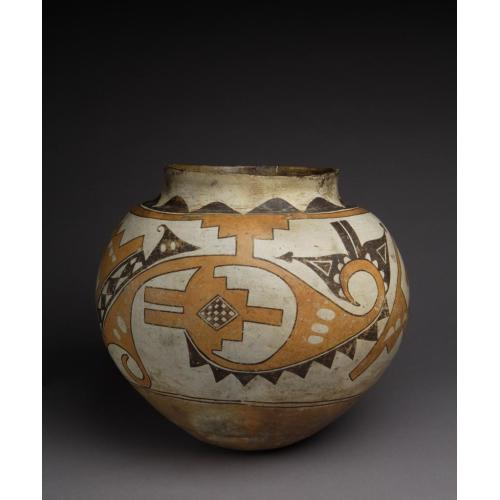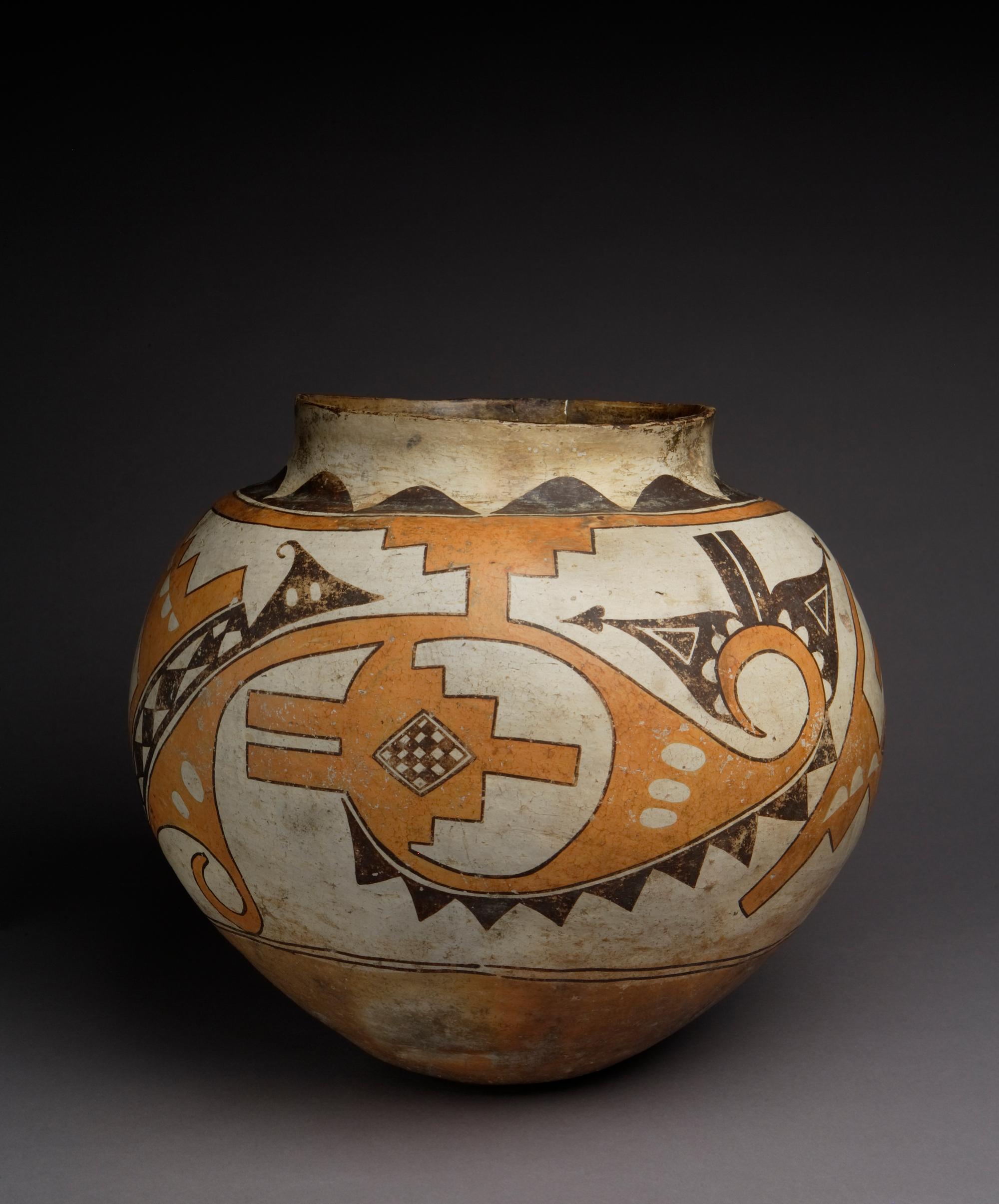
Photograph by Addison Doty. Copyright 2011 School for Advanced Research.
Storage jar
Date: c. 1840
Artist or Maker: Unknown
Dimensions:
35.6 x 40.6 cm (14 x 16 in.)
Medium: clay | paints
Credit Line: Indian Arts Fund purchase for the permanent collection, 1928.
Place Made:
Valencia County, New Mexico, Southwest, United States, North America
Object Number: IAF.1036
Not on view
Tribal Collection Review RemarksAccording to the participants in the Acoma collection review visit May 11-13, 2016 (Events Record “Collection Review: Acoma Pueblo Review 6”): The design on this jar may be a water serpent. There are line breaks in the top line of the bottom black framing lines and also in the black “scallop” shape in at the top.
According to the participants in the Acoma collection review visit February 26-27, 2019 (Events Record “Collection Review: Acoma Pueblo Review 12”): The bright orange slip used on this jar is difficult to find and is rarely used now days.
Storage jars are constructed with thicker walls than water jars in order to support their size and the weight of the contents they would carry. The base of a storage jar is either round or flat. Storage jars were likely stored in cool places and stored items such as dried meats, crops from the garden, and other goods.
Storage jars are no longer being used or made at Acoma today. Jars that are made today that are comparable in size to that of a storage jar are usually made for sale and not for use.
In Collection(s)
Bibliography:
Historic Pottery of the Pueblo Indians, 1600-1800
- Pg. between 128 and 129
- Fig. Plate XXIII
Pueblo Designs
- Pg. 65
- Fig. Plate XXIV, 2
Matte-Paint Pottery of the Tewa, Keres and Zuni Pueblos
- Pg. 248 (text); 250 (photograph)
- Fig. Plate 29, d
"Pueblo Pottery: 2000 Years of Artistry"
- Pg. 596
- Fig. N/A
Acoma and Laguna Pottery
- Pg. p. 30, 212
- Fig. 2.6
The Pottery of Acoma Pueblo
- Pg. 125
- Fig. 6.22
The Indian Arts Research Center, in collaboration with Native American community scholars, strives to present accurate collections records. Records may be updated as new information becomes available and is reviewed with the Native American community having cultural affinity to particular items. Please write to iarc@sarsf.org if you have questions or concerns related to the documentation.
